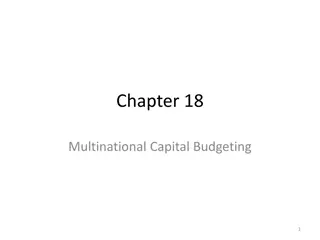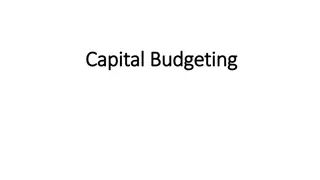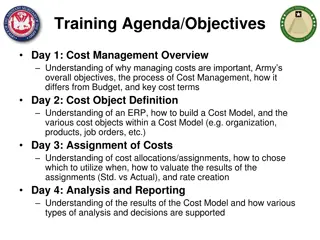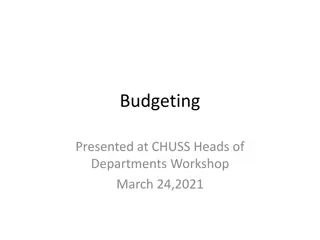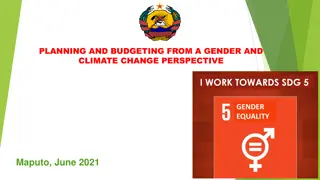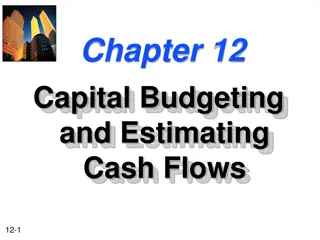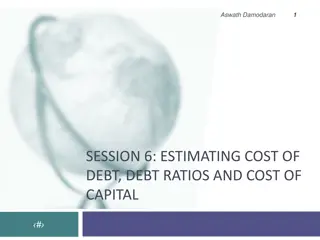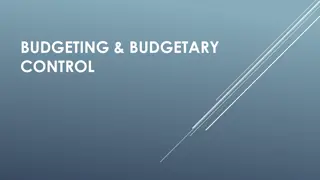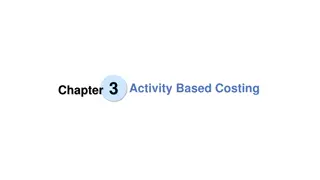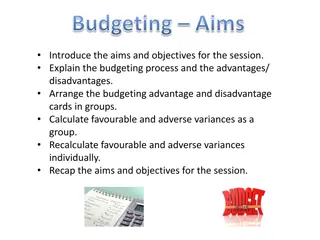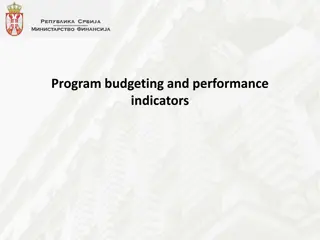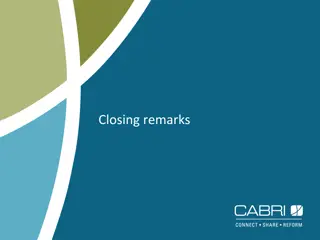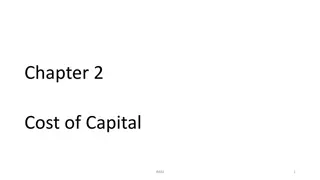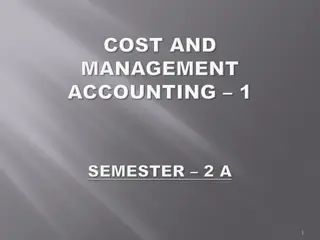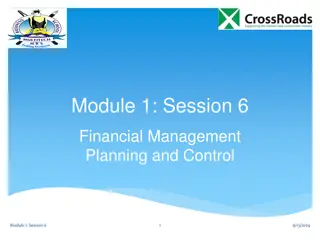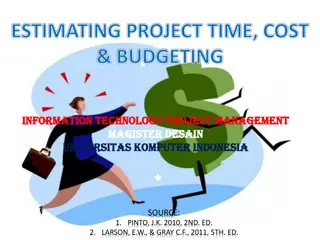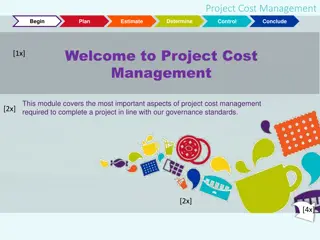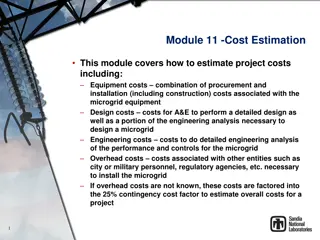Importance of Estimating Project Time, Cost, and Budgeting
Efficient project estimation is crucial for cost control and decision-making, ensuring project success. Learn why estimating time and cost are vital, the impact of factors on estimates quality, guidelines for accurate estimations, common problems with cost estimation, and top-down budgeting approach.
Download Presentation

Please find below an Image/Link to download the presentation.
The content on the website is provided AS IS for your information and personal use only. It may not be sold, licensed, or shared on other websites without obtaining consent from the author.If you encounter any issues during the download, it is possible that the publisher has removed the file from their server.
You are allowed to download the files provided on this website for personal or commercial use, subject to the condition that they are used lawfully. All files are the property of their respective owners.
The content on the website is provided AS IS for your information and personal use only. It may not be sold, licensed, or shared on other websites without obtaining consent from the author.
E N D
Presentation Transcript
ESTIMATING PROJECT TIME, COST & BUDGETING Universitas Komputer Indonesia Universitas Komputer Indonesia SOURCE: 1. PINTO, J.K. 2010, 2ND. ED. 2. LARSON, E.W., & GRAY C.F., 2014, 6TH. ED.
PROJECT ESTIMATION Project estimation is indeed a yardstick for project cost control. And if the yardstick is faulty, you start on the wrong foot . (Kharbanda, O.P., and Pinto, J.K. 1996:73)
Why Estimating Time & Cost Are Important to support good decission to schedule work to determine how long the project should take and its cost to determine whether the project is worth doing to develop cash flow needs to determine how well the project is progressing to develop time-phased budgets and establish the project baseline.
The Relationship among WBS, Scheduling, and Budgeting WBS Budgeting Scheduling
Factors Influencing The Quality of Estimates Planning Horizon Project Duration People Project Structure and Organization Padding Estimates Organization Culture Other Factors
Estimating Guidelines for Times, Costs, and Resources Responsibility Use several people to estimate Normal conditions Time units Independence Contigencies Adding risk assesment to estimate helps to avoid surprises to stakeholder
Problems with Cost Estimation Low initial estimates Unexpected technical difficulties Lack of definition Specification changes External factors
PROJECT BUDGET APROACH Top Down Budgeting Bottom Up Budgeting
Top Down Estimating Top down estimates usually are derived from someone who uses experience and/or information to determine the project duration and total cost. These estimates are sometimes made by top managers who have very little knowledge of the processes used to complete the project.
Bottom-Up Estimating The Bottom-Up approach at the work package level can serve as a check on cost elements in the WBS by rolling up the work packages and associated cost accounts to major deliverables. Similarly, resource requirement can be checked. Later, the time, resource, and cost estimates from the work packages can be consolidated into time-phased networks, resource schedule, and budgets are used for control.
Condition for Preferring Top-Down or Bottom-Up Time and Cost Estimates Condition Top-Down Estimates Bottom-Up Estimates Strategic decission making X Cost & time important X High uncertainty X Internall, small project X Fixed-price contract X Customer wants detail X Unstable scope X
Top-Down and Bottom-Up Estimates Top-Down Estimates Bottom-Up Estimates Intended Use Feasibility/conceptual phase Rough time/cost estimate Fund requirements Resource capacity planning Intended Use Budgeting Scheduling Resource requirements Fund timing Preparation Cost 1/10 to 3/10 of a percent of total project cost Preparation Cost 3/10 to 1.0 of a percent of total project cost Accuracy Minus 20 to plus 60% Accuracy Minus 10 to plus 0% Method Concencus Ratio Apportion Learning curve Method Template WBS packages Range estimates
Source of Project Cost Labor Material Subcontractors Equipment & facilities Travel
Direct vs Indirect Costs Direct cost are those clearly assigned to the aspect of the project that generated the cost (example labor & materials). Indirect cost, generally are linked to two features: overhead and selling and general administration.
Recurring vs. Nonrecurring Costs Non recurring cost might be those associated with charges applied once at the beginning or end of the project, such as preliminary marketing analysis, personnel training, or outplacement services. Recurring cost are those that typically continue to operate over the project s life cycle. Most labor, material, logistics, and sales costs are consider recurring.
Fixed vs. Variable Costs Fixed Cost, do not vary with respect to their usage. Example cost for leasing equipment. Variable Cost, are those that accelerated or increase through usage; that is, the cost in direct proportion to the usage level. Example: equipment parts, materials, etc.
Normal vs Expedited Cost Normal costs refer to those incurred in the routine process of working to complete the project according to the original, planned schedule agreed to by all project stakeholders at the beginning of the project. Expedited costs are unplanned costs incurred when steps are taken to speed up the project s completion.
Cost Classification Type Frequency Adjustment Schedule Recurring Nonrecurri ng Variable Expedited Cost Direct Indirect Fixed Normal Direct Labor X X X X Building Lease X X X X Expedite Costs X X X X Material X X X X


